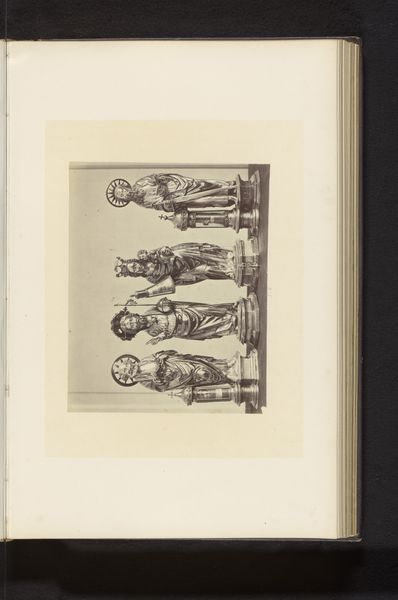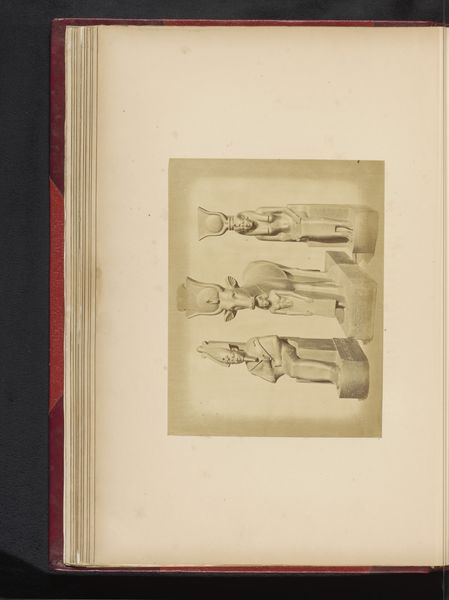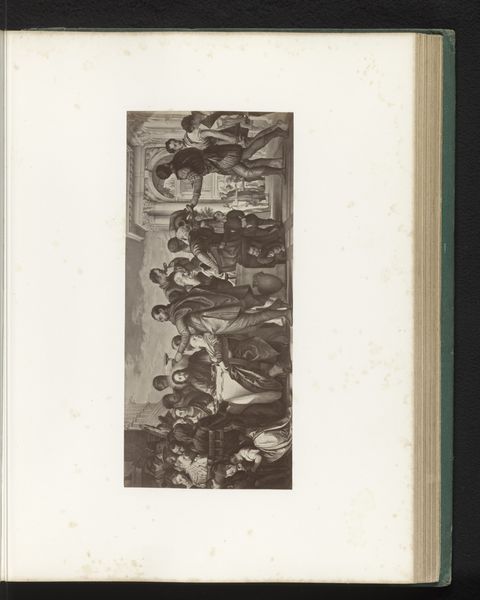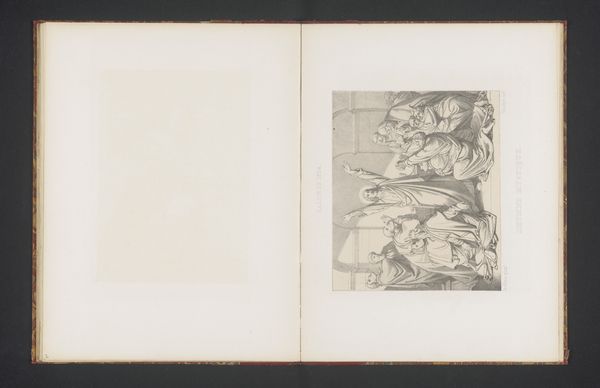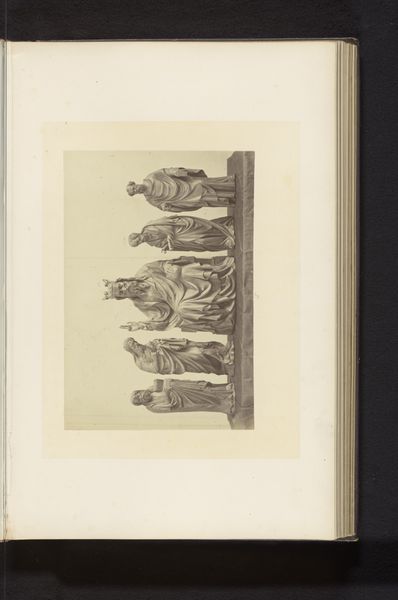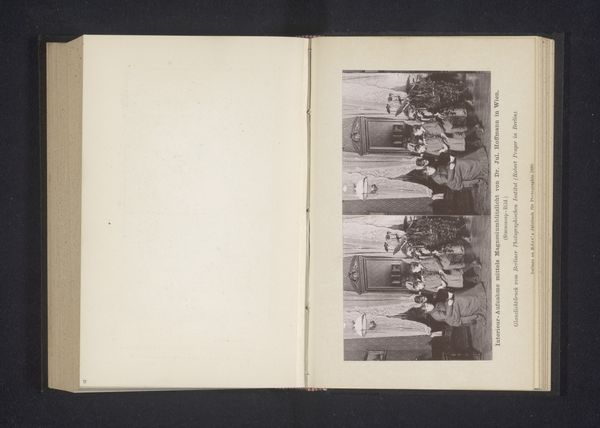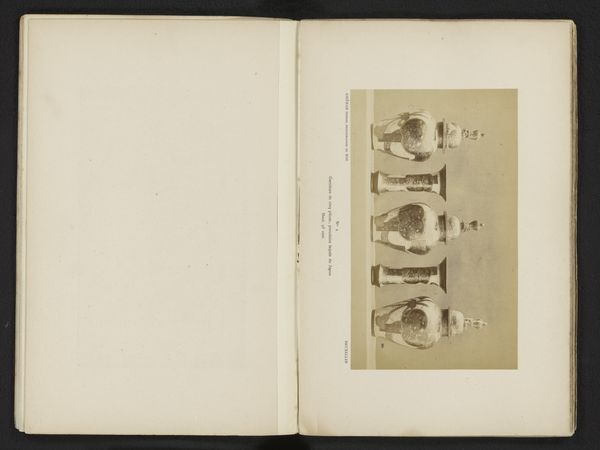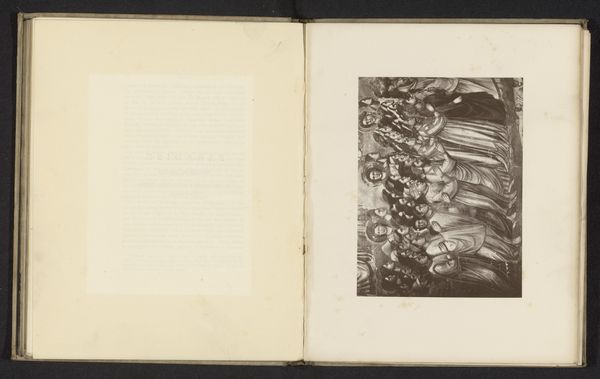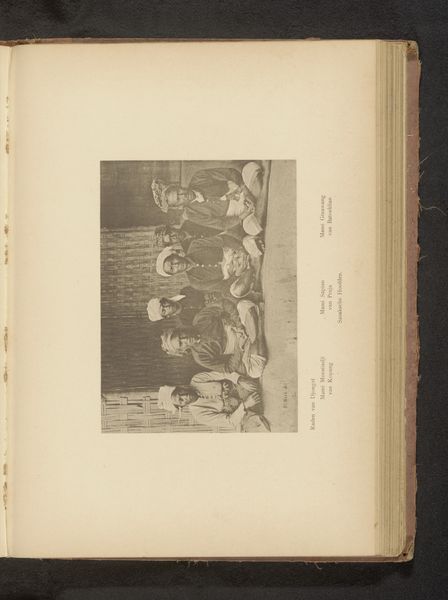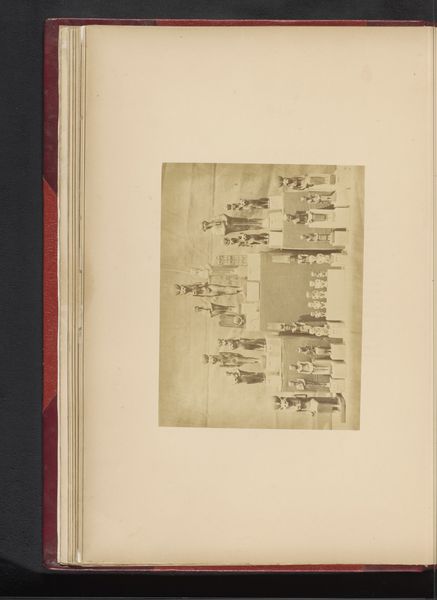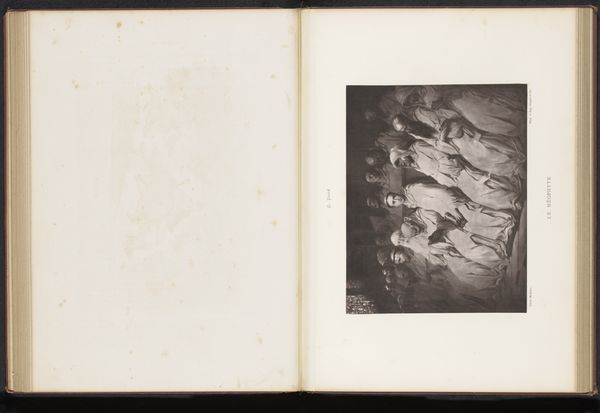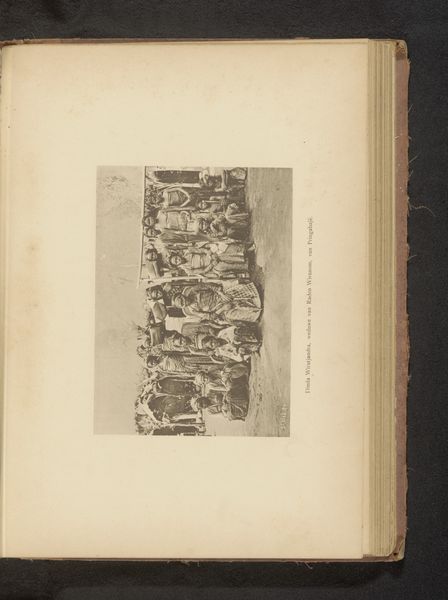
Vier relikwieënkasten in de vorm van sculpturen uit de Onze-Lieve-Vrouwebasiliek in Tongeren, opgesteld op een tentoonstelling over religieuze objecten uit de middeleeuwen en renaissance in 1864 in Mechelen before 1866
0:00
0:00
print, sculpture
#
medieval
# print
#
figuration
#
sculpture
Dimensions: height 187 mm, width 243 mm
Copyright: Rijks Museum: Open Domain
In this 1864 photograph by Joseph Maes, we observe four reliquary caskets from the Basilica of Our Lady in Tongeren, displayed at an exhibition in Mechelen. These sculpted containers, each topped with figures bearing halos, embody the sacred intersection of art and devotion in the Middle Ages and Renaissance. The halo, a radiant circle crowning each figure, is a potent symbol of divine grace and saintly virtue, tracing its origins back to pagan sun gods and celestial emperors. Over time, this motif has been Christianized, becoming a signifier of spiritual enlightenment and moral purity. Consider the gesture of offering or blessing seen in some figures—a timeless invocation mirrored in ancient Roman iconography and even earlier Egyptian art. Such gestures tap into a deep well of collective memory, resonating with our innate desire for divine favor or protection. These symbols serve as powerful reminders of the cyclical nature of history, where forms and ideas resurface, evolving yet enduring across time.
Comments
No comments
Be the first to comment and join the conversation on the ultimate creative platform.
